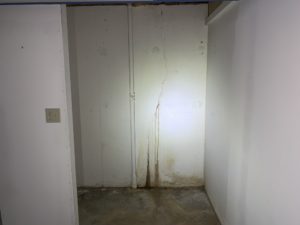 Perhaps you are on the Building Committee which has been charged by the Board to recommend a replacement siding material for your 35 year old condo. Perhaps you are a property manager whose in-basket is filled with unit owner complaints about vinyl clapboard siding problems in the new condo complex. Whatever the vinyl façade issue is, the future solutions may surprise you.
Perhaps you are on the Building Committee which has been charged by the Board to recommend a replacement siding material for your 35 year old condo. Perhaps you are a property manager whose in-basket is filled with unit owner complaints about vinyl clapboard siding problems in the new condo complex. Whatever the vinyl façade issue is, the future solutions may surprise you.
Vinyl siding materials are everywhere. It is probably the most common façade material in all its forms used on condominiums across the nation, and for good reason. It is quick to install; it is relatively inexpensive; and has an estimated useful life of over 40 years. Most of its negatives are well understood: it can crack or break in the winter time from hail or your grandkids hockey pucks; it can make noise when it’s windy or too hot; colors fade or become chalky over time; and frequent cleaning is required. However, these may not be the issues you may need to face with the current vinyl siding problems.
Solar Attack
This problem can fall in the unintended consequences category. With the issuance of the new building energy codes and the drive to reduce our heating costs and carbon footprint, we are melting our vinyl siding. This is happening due to the installation of the new low-E, highly insulated glass windows being installed in both new buildings and replacement windows.
The thermal layers and reflective properties of these high-tech windows cause sun rays to bounce off and reflect onto vinyl siding causing the siding to buckle; warp; or melt. These new window surfaces act like magnifying glasses concentrating the solar energy on a vinyl surface that cannot tolerate heat over 150 degrees Fahrenheit. This condition can occur when a window on the south elevation of the building is near a right angle corner wall covered in vinyl siding. It can even occur when a new commercial building is built across the street and its new glass wall façade faces the sun and reflects across the street to your vinyl sided property.
So what are you to do? This problem was rare in the past but now solar damage is occurring with increasing frequency due to the drive to install low-E windows. The Vinyl Siding Institute suggests placing awning or shades over the windows and even changing the landscaping to create shade trees to block the light. Some vinyl siding manufacturers are addressing this type of solar damage by adding a ‘thermal diffusion agent’ to the vinyl mix at the factory to help reflect and resist the heat build-up.
Manufacturers are also responding to the problem with vinyl siding by excluding solar refection or melt damage from their warranties. Their warranties always excluded damage from heat sources such as gas grills placed too close to the exterior wall, but now damage from reflective windows is recognized so it would be wise to read the fine print before selecting a siding brand.
Color Fading
This increasing problem is a sub-set of the solar melting problem. Whether it be due to window reflective energy; climate change; or changes in manufacturing, this color fading complaint is becoming more prevalent. In the past, color fade was protected with a lifetime warranty by the manufacturer. Color fade was measured by a maximum of a Delta E of 4 Hunter units in accordance with ASTM standard D2244.
In the past, this warranty issue would be handled by a siding replacement policy. Now, some manufacturers are offering a ‘restore’ process instead of replacement. The ‘restore’ process would allow the manufacturer to paint the siding with an acrylic paint often applied by specialist painting contractors. This restore process comes with a 10-year warranty, down from the prior ‘limited-lifetime’ color warranty. Here again, read the fine print before signing the contract.
Installation
Vinyl siding may be quick to install, but it is not easy, if it is done right. Vinyl siding has an integral vinyl tab at the top in which an oval hole is punched at set intervals along its length to allow a nail to be driven through this hole and into the sheathing. Sounds simple, but it is not. The manufacturer specification requires the installer to drive the nail head within 1/32th of the vapor barrier/ sheathing surface so as not to bind the thermal movement of the siding.
Keep in mind the fasteners are being driven by an adjustable nail gun requiring a level of skill to properly set the nails in each slot hole without touching the vinyl. This accuracy requirement, coupled with today’s reduced numbers of skilled construction personnel, makes this a quality control challenge. If fastener binding does occur, the siding will not properly move with thermal expansion and buckling will soon appear on the surface.
So the answer to today’s vinyl siding problem is: do your research. Read the manufacturer’s specifications and warranties; ensure your contractor is committed to good supervision of the installation of this important building envelope element; and finally, follow up with your own quality verification program, either through your building committee or project engineer. The siding is only as good as it is installed.



 fing the outside of the foundation walls and/or
fing the outside of the foundation walls and/or